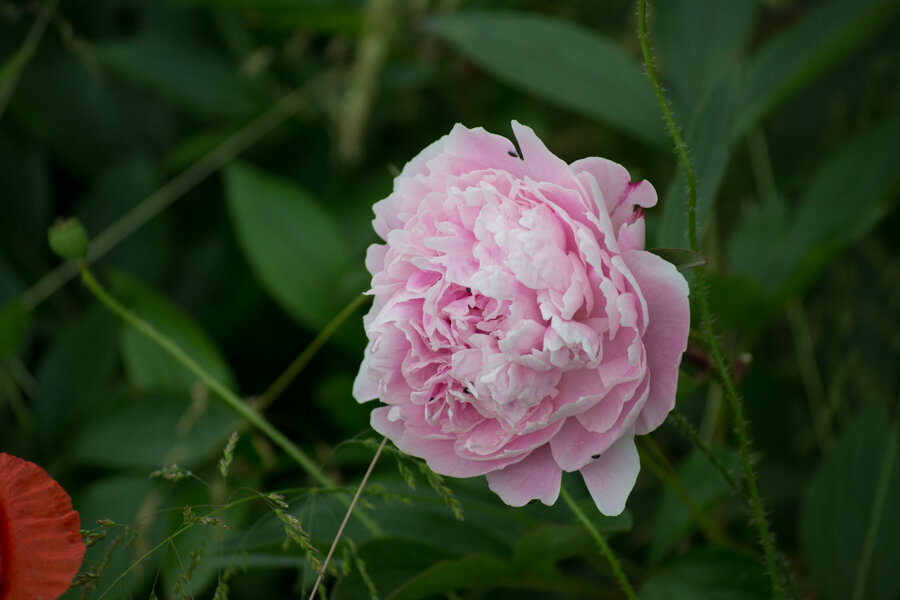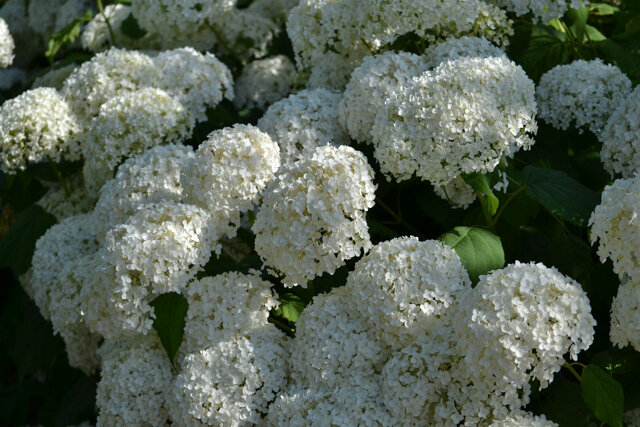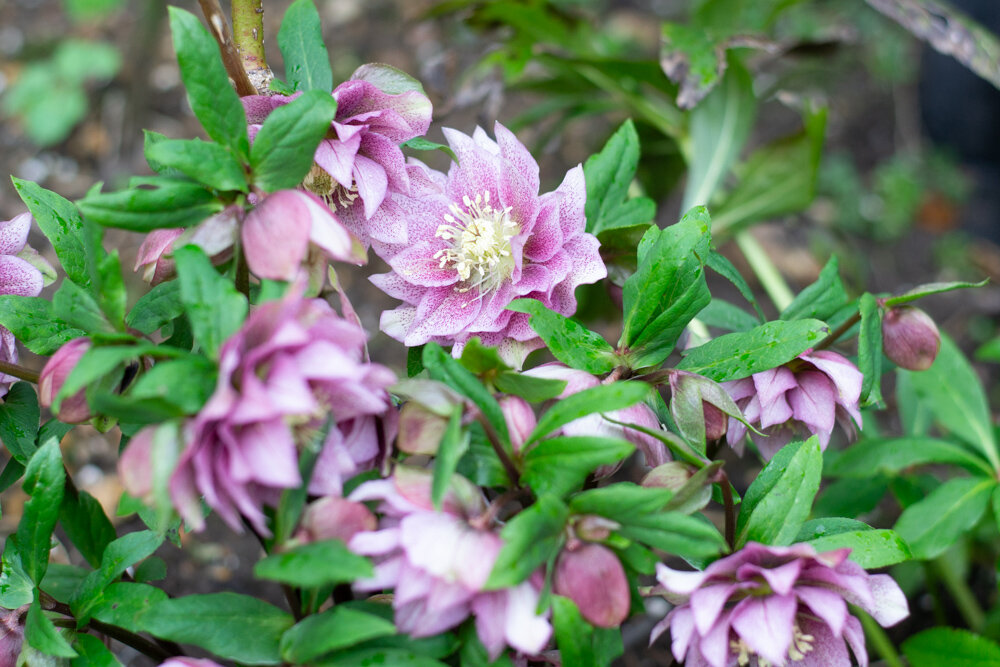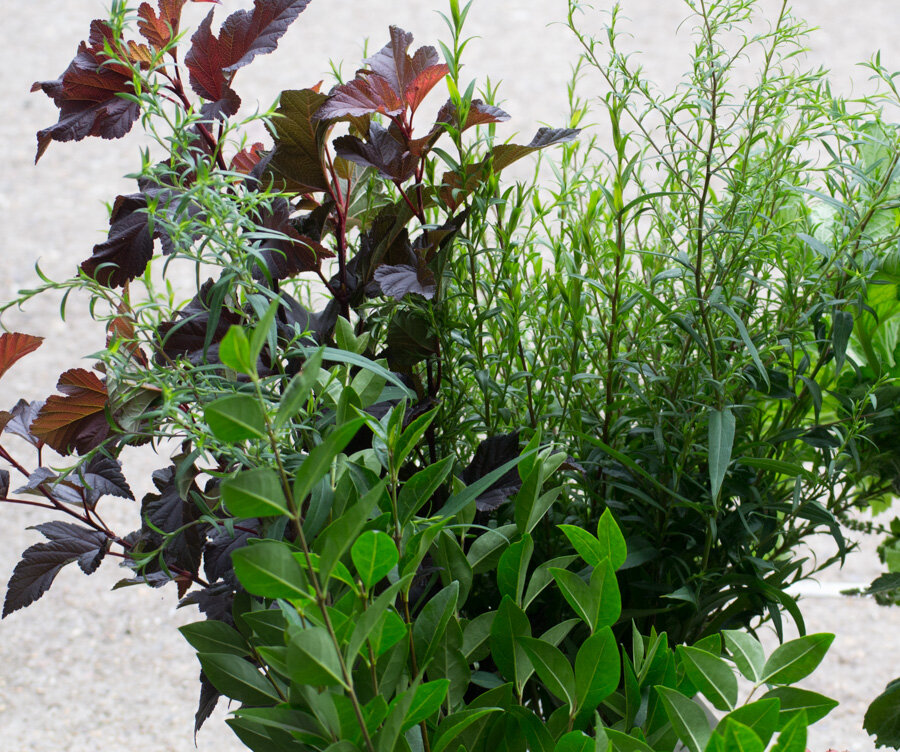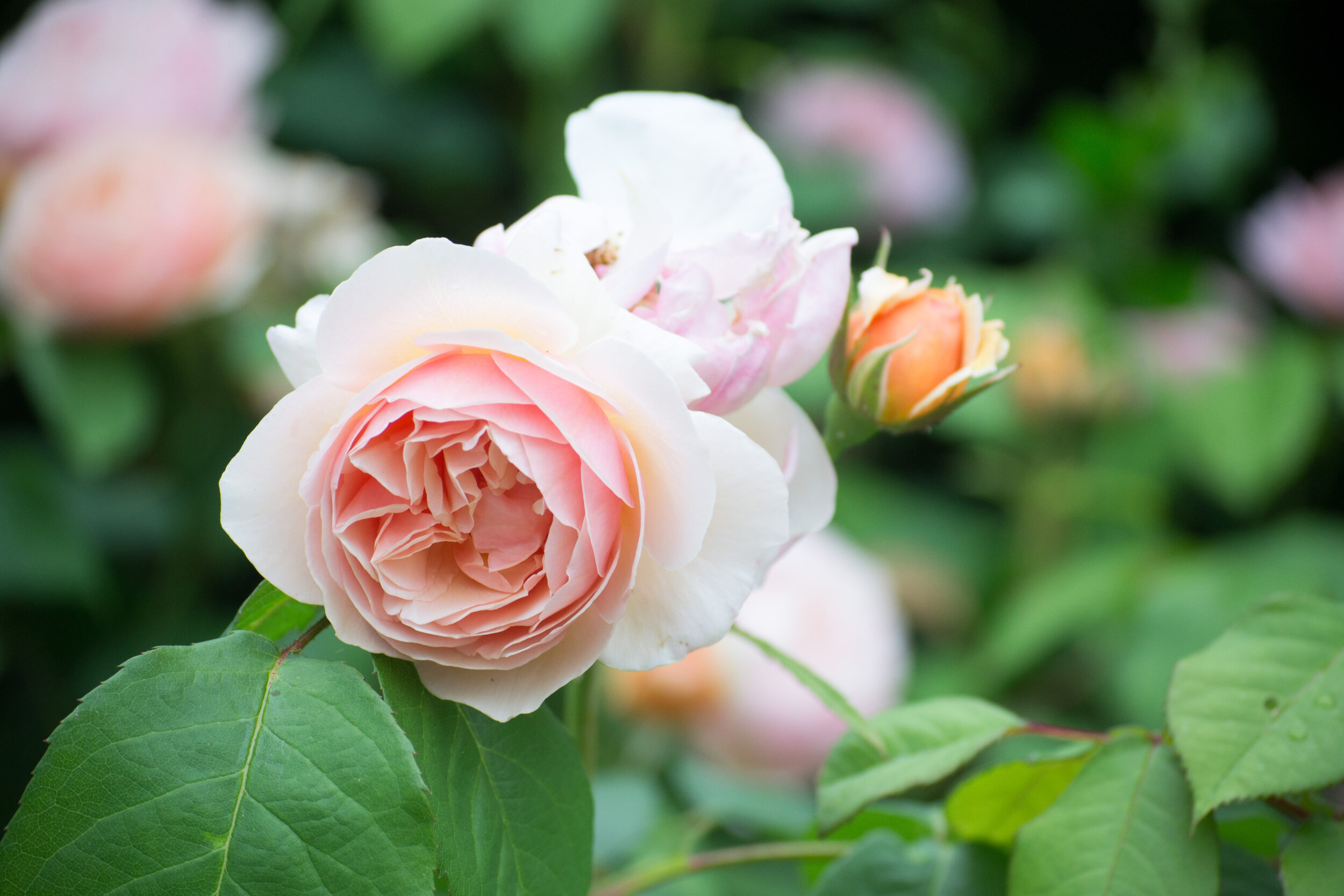Paula, Mill Pond Flower Farm.
How to choose plants for your market
Module 2 concentrated on helping you to identify the markets for your flowers and foliage. You should now have a good idea of what your flowers will be used for and what they need to do for your customers. This module (no 4) will look at how we make decisions over what to grow, what are the very best flowers for your target market, how to get them, which colours you might need and how you can make your floral offer distinctive and unique.
Creating a 5 year planting plan
When I first started growing cut flowers it was an experiment, money was tight and I had no idea whether it would work at all, never mind make any money. If I mentioned what I was doing to anyone they laughed openly at the idea of growing cut flowers for sale in Scotland. I needed a low risk, low capital outlay plan.
I’d recently moved to a derelict smallholding and didn’t have any garden plants at all, just 4 acres of nettles, docks and water. So, I joined Flowers from the Farm (£75 – the best money I have ever spent on my business) spent £35 on annual and perennial seeds and bought 8 shrubs – a viburnum, corylus avellana contorta, two roses and four hydrangea Annabelle.
My plan was as follows:
Plant annual seeds for flowers for Year 1 and onwards
Plant perennial seeds for flowers from Year 2 onwards
Plant shrubs for foliage**
See if I could sell the flowers and then reassess
**The shrubs I bought were recommended on the Google forum I followed at that time. They did OK but the hydrangeas didn’t work out for me as I just can’t stand them!
It wasn’t such a bad plan. At the end of the season I knew there was a market for Scottish grown cut flowers, I had a small number of perennials and 8 small shrubs as a starter on year 2, plus a lovely lady from down the road had seen an article about what I was doing in the local newspaper and donated a car load of asters and hesperantha.
From then on, I’ve planned on a slightly bigger scale and with an eye to the future, but still within the limits of our income and capital. Growing cut flowers and foliage is a long-term business. Although it’s possible to get up and running relatively quickly, any plants other than annuals take time to get going, bulk up and produce decent numbers of stems. To create a full plot of stock plants that will supply your markets with beautiful flowers or foliage can take a lot of time and money so it’s worth taking some time to create a plan for what you need.
Where to start
The worksheets from Module 2 on Market Percentage and Market Planning should have helped you to identify your markets, explore the types of flowers for each market and the quantities you might grow.
Complete the planning worksheet below using your thoughts on your target markets so far:
Think about where you want your business to be at the end of 5 years and work backwards
How many stems a week will you be selling? That may sound difficult to work out, but actually it’s fairly straightforward. Take your target weekly income from flower sales and divide it by your average stem price and you’ll have a rough idea.
Set a realistic budget for plants and seeds
Think carefully about the percentage of trees, shrubs, perennials and
annuals you want – this may change over the 5 years as your perennial
or shrub stock grows.
Will you have the resources to invest in more expensive crops as a one-
off purchase?
If you don’t own your plot you may be more reluctant to spend on
permanent planting, what will you grow instead?
Setting the Criteria before you shop
Picture the scene...
It’s a cold, wet evening in the middle of winter, you’ve had no flowers for months now and you sit down with your computer. You browse pictures of gorgeous, bright flowers, beautifully photographed, all promising a summer of bounty and flower sales. Your credit card takes a hammering. But how do you make sure you actually get the flowers and foliage you need for your business?
1. Before you do any ordering check what you already have
Get all your seeds into one place – they should be stored in an airtight box in a cool place
Make a list of what you’ve already got, including saved seed
Hunt down any pots of perennials, cuttings, things that haven’t made it into the ground yet
How’s your current stock doing – do you have perennials that could be divided or have half of them died in the drought/floods?
It’s easy to forget what you have in the ground – don’t overlook your current stock and order more!
2. Consult your plan
You’ve decided on your target market and the direction of your business. You know what your flowers need to do for your customers.
We'll talk more about choosing specific varieties in a little while.
3. Remind yourself of your budget
You know how much you have to spend. Remember to stick to your budget, spend that amount, no more and no less. It might seem good to be thrifty, but you don't want to spend less than budget, because if you've worked out that you need £4000 worth of Tulips, if you only buy £3000, you will be cutting out a quarter of your sales.
4. Set your criteria for the flowers and foliage for each market
An overview of the requirements of flowers and foliage for each main market as a reminder is below.
Do you have a contingency plan? If you see something new and unusual that you think could be a huge trend and your ideal customer will love, under what conditions can you buy?
Seeds or plants?
Tiny Ammi seedlings
When we’re growing flowers as a business, the aim is to have a big enough difference between the cost of producing the flowers and the price we sell them for to pay for our labour and make a profit. If we can keep costs low, we have more chance of making a profit.
Seeds are generally cheaper than plants, but there are other factors that might affect whether you grow from seed or invest in more mature stock:
Your market requirements for flowers and foliage in the coming seasons – if you’re just setting out you may have time to wait and your plants can grow with your business.
Time from germination to harvesting – some plants may take two or three seasons to get big enough to harvest from but may still be worth growing from seed due to the comparative costs IF you have the time to wait. Other plants may be simple to grow from seed and will flower in weeks so buying in plants will be an unnecessary expense.
Skill and experience in growing from seed – it can take a few seasons to get good germination rates and some seeds are stubborn, tricksy little swines.
Space and facilities available for germination and seedling care – if you want to grow a serious quantity of plants from seed you’ll need the equipment to plant, germinate and grow them on to planting out size. Direct sowing is an option but has drawbacks. You might be able to buy in plug plants in wholesale quantities to save your time and resources. A wider range of cut flower varieties is available in the US than is currently sold in the UK.
Availability of specific plants from seed – some plants are protected by Plant Breeders Rights (PBR) and aren’t available for propagation without a licence.
Money to invest - sometimes it’s worth taking a short cut to flowers, while other times, growing from seed can be exceptionally cost effective and very satisfying!
The varieties that we think are worth buying as plants are:
Paula – Astilbe, Roses, Lilac, Spirea, Hellebores
Carol - Hellebores, Geum Totally Tangerine, Physocarpus, Broom White lion, Peonies
Claire - Hydrangea, Physocarpus, Berried Hypericum, Hellebores, Dicentr
“QUESTION:
Seeds or plants? What do you think?”
How to buy what you need
We all LOVE plants! Plant shopping is a promise of beauty, excitement and new blooms or foliage. However, when it’s your business you need to make sure the money you spend will bring a return on investment, whether it’s a packet of seeds for 99p from a budget supermarket or a £500 consignment of Italian Ranunculus.
Here are some tips to keep you on the straight and narrow:
Stick to your 5 year plan – remember, you’re working to develop your business and flower farm in a measured way, use the tools that are available and go steady.
Know when you need to order your stock and add it to your diary. Order in good time and you’ll have the pick of the varieties you want.
Have in your mind how many stems you’ll need to sell to pay back your investment –
Italian Ranunculus cost around 35p each just for the claws. Each claw should provide 4 saleable stems at 65p each. Taking off the costs of planting, cultivation, protection, cutting and delivery, plus allowing for any attrition, will still give scope for a modest profit per claw. If you buy a tulip bulb for 49p, can you make a profit when you’ll only get one flower per stem?
Sometimes the cheaper plants and bulbs can be very cost effective if they are less well known and you have a market for them.
I always plant a good quantity of frittillaria assyriaca which are only about 6p each. They aren’t the most common variety and aren’t very spectacular in the garden but are a great cut flower and good colour for spring weddings – they always sell and make a good profit!
Know the criteria for plants for your markets – it might look lovely but does it have long enough stems, is it the right colour, will it flower when you need it?
If you’re shopping online fill your basket with all the things you would like – this is your WISHLIST
Under no circumstances complete the order!
Leave it overnight, then go back and edit till it fits your budget.NOW you can order.
Buy the right quantities. It’s tempting to buy one or two of lots of things and that might be good for you if you’re growing to supply your own wedding floristry. If you’re listing what you have to sell wholesale to other people, a few plants won’t give you many stems and you’re less likely to list them, so they’re more likely to be unsold.
If you get a rush of orders well ahead of time, reconsider your plant stock and order more if necessary.
When I first started to supply wedding florists, I didn’t have a lot of dahlias and ordered a moderate number in January for the following summer. In April, one of my new florist customers sent a list of booked weddings including eight in August and September. Knowing I could now sell lots of dahlias, I made a late order of dahlia tubers and planted them directly into the ground. Each tuber cost around £2.50 but produced around 50 stems over the season and easily repaid the initial investment.
We've added below a chart of when to be thinking about and ordering each set of plants.
Where to Buy your Stock
Claire, Plantpassion
Keeping it local
The best plants to grow in your plot are those that will grow well in your plot. We all know the saying "Right plant, right place" but actually when it comes to growing for market, you really need to take this into account
So, find your local growers :
Look round local gardens, - what is growing strongly? what is in more than one garden?.
Find your local gardening society - many of them are closing down, but the knowledge that is present at these societies from gardeners with many years of knowledge is invaluable to you, to grow things that do well in your area. They often have plant sales in spring where you can get bargains if you know what to look out for.
Find your local Nafas / Flower arranging group - yes their style of flower arranging may be more formal than is ideal for your flowers, but they will have fantastic knowledge about the foliage that grows well locally that can be used in flower arranging. I've even got several of my local ladies who are now getting older, and can't use everything in their garden. An invitation to prune/ take cuttings is a fantastic way of building your business in terms of knowledge and plants.
Find your local nurseries, especially specialist plant nurseries - don't assume that they will advertise on the internet. Many nurserymen and women know their plants, but don't know how to market themselves - ask the groups above where they get their plants from.
Our favourite local suppliers are
Claire - Surrey - Spring Reach Nursery - great for Hydrangeas, Hellebores and Roses.
Paula - Scottish borders - Macplants - specialist perennial nursery
Carol - Cheshire - Morreys Nursery - old fashioned grower who propagate their own field grown plants. CK Jones roses, specialist rose grower, retail only, importer for Weekes roses.
Note: from our collective experience, garden centre chains are not the best place to find plants, unless they are locally run. They will have central office buying departments which won't take into account your growing conditions, and with few exceptions, you will have as much or more knowledge as the staff.
Collaborations and using bulk buys
Do you have other growers near to you, within easy travelling distance?
Ranunculus sorting in Claire’s barn
Bulk buys are a fantastic way of getting varieties if you don’t want a sizable minimum wholesale order. They are also used to enable purchase of single coloured varieties, and they are a way of sharing costs of transport. Meeting up to sort out shares of a bulk buy is also important for networking, and can be a fun shared activity.
Here in the UK, the best source of bulk buys is Flowers from the Farm. This fantastic organisation has many members both nationally and locally in their areas, willing to do the extra work to organise a bulk buy to ensure that they themselves can get hold of varieties that otherwise wouldn't be available. Roses, Ranunculus, Anemones, Dianthus Greentrick, Paeonies, Chrysanthemums are just some of the things that members have grouped together to buy in bulk.
Buying power is important. So if several or many growers can get together, then they have a lot more say to encourage suppliers to work with them. For example, Flowers from the Farm has worked with Moles Seeds to identify specialist cut flower seeds that are now widely available.
Who do we recommend?
When buying for your business, the criteria to consider are:
Good prices,
Specialist information,
Clear timescales for ordering and delivery,
Reliable customer service.
We've used the following UK suppliers and have found that they are good on at least 3 of the 4 categories:
Moles seeds - Excellent wholesale seed supplier. They took advice from members of FFTF and started stocking a wider range of individual colours for cut flowers seeds, not all in their catalogue, but available on the website. Order online for a small discount, and before the end of November for a small discount. Seeds arrive very promptly unless ordered in peak season (January).
Chiltern seeds - Specialist seed supplier. Great for unusual different varieties, often at year 1 or 2 of the trend timeline. Check website for number of seeds likely to be in the pack.
J Parkers Wholesale - Large wholesale bulb and perennial supplier, especially good prices for Tulips, Alliums and Dahlias. Order promptly at the beginning of each season for best quality stock. Not the best place for ahead of the curve varieties, but great for standard stock lines for bulbs, perennials and bare root plants at good prices. Chase them if orders or late, or varieties turn out incorrectly, they always refund or replace.
Owls Acre Sweet Peas - Supplies winter/spring flowering varieties of sweet pea seeds, in reasonable quantities. Sells out quickly, so get orders in in August.
Johnson's Sweet peas - Philip Johnson has been my go-to sweet pea information source for the last 5 years. His varieties are highly scented and long stemmed for the show bench, so are great for cut flowers. Germination rates have always been excellent.
Seiont Nurseries - Welsh perennial plant, fern and heuchera supplier, I used Seiont nurseries before I was a cut flower grower for some landscaping jobs, but they have been great at supplying me with liner and plug shrubs and perennials at good prices.
Whetmans Pinks - The UK source for Galilee Anemones, and Israeli ranunculus as well as their own Carnations and Pinks.
Kings Seeds - Good wholesale seed supplier, including a great range of sweet peas.
Howard Nurseries - For perennials, very good quality, supplier for RHS Wisley.
Chrysanthemums Direct - large range of Chrysanthemums sent as cuttings.
Kolster - imported plants, but specialist cut flower varieties. (Only available to small growers in the UK through FFTF bulk buy).
Getting what you need
Our top tips:
Buy Wholesale not retail, when you can.
If you don't meet minimum orders then club together with other local growers, or take a risk and buy extra yourself and then sell on.
Share with other growers to help on delivery charges.
Ask if you need something that they don't appear to offer - delivery in a box?/ Collect from a local nursery or wholesaler they supply?
Don't be intimidated by wholesale nurseries, they're not used to flower growers, just landscapers, but they want to do business.
Bear in mind wholesalers will expect you to know what you want, and won't have time to advise you.
Swap cuttings and seeds with other growers to increase your numbers




